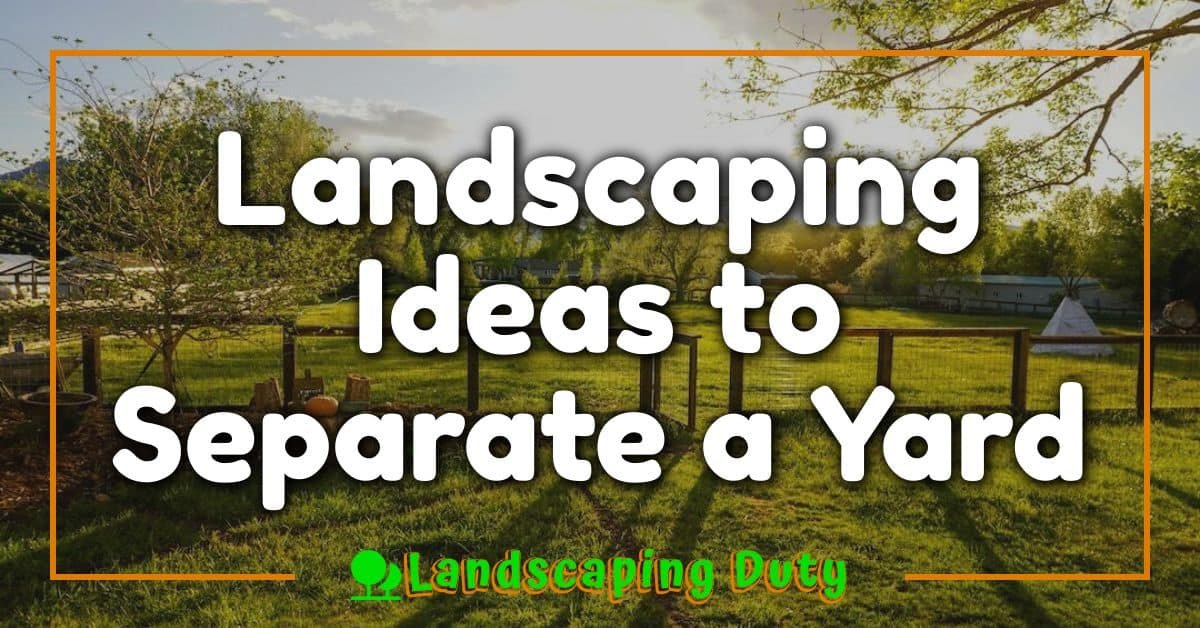Designing a landscape around existing trees is both an art and a challenge. Trees bring natural beauty, shade, and character to any outdoor space, but working with them requires thoughtful planning. It’s not just about making the space look good—it’s about preserving the health of the trees while enhancing the overall design.

I’ve found that creating harmony between trees and landscaping can transform a yard into a stunning, functional retreat. Whether it’s choosing the right plants, working around roots, or adding pathways, every decision plays a role in maintaining balance. With the right approach, you can highlight the beauty of your trees while crafting a space that feels inviting and purposeful.
Understanding The Importance Of Existing Trees
Existing trees contribute significantly to the ecological and aesthetic value of any landscape. They provide shade, reduce air temperature, improve air quality, and serve as habitats for wildlife. Mature trees, such as oaks or maples, can take decades to grow, making them irreplaceable assets in outdoor spaces.
Tree roots stabilize soil and prevent erosion. They absorb water efficiently, reducing stormwater runoff and lowering the risk of flooding. Consider the environmental benefits before altering landscapes to ensure ecological balance remains intact.
Established trees enhance visual appeal by adding natural depth and texture. By integrating pathways, flower beds, or outdoor seating areas around them, it’s easy to maintain their prominence while blending them seamlessly into the landscape. Proper integration ensures the space feels cohesive and functional.
Assessing The Site
Evaluating the physical characteristics of a site ensures that existing trees remain healthy and thrive within the landscape design. This process involves understanding tree health, root zones, and soil conditions.
Evaluating Tree Health
I examine tree health by looking for visible signs of damage or disease, such as dead branches, fungal growth, or discolored leaves. I assess the tree’s structural stability, checking for cracks, cavities, or leaning patterns. Confirming tree health with an arborist can provide detailed insights, especially if the tree appears stressed or compromised.
Identifying Root Zones
I map out each tree’s critical root zone to avoid damaging roots during the design process. A tree’s root zone generally extends outward 1-1.5 times its canopy’s width. Avoiding excavation, compaction, or construction within this area ensures the tree retains access to water and nutrients. For larger or older trees, I increase caution around their root systems to protect their longevity.
Analyzing Soil Conditions
I test soil near the trees to determine factors like composition, pH levels, and drainage capabilities. Soil compacted from foot traffic or prior construction reduces aeration and water infiltration, which can harm trees. Amending poor soil with organic matter or aerating compacted areas can improve its quality. Identifying deficiencies allows me to make informed adjustments for both tree health and surrounding plant selection.
Designing Around Trees
Designing a landscape around existing trees requires striking a balance between aesthetic appeal and tree preservation. Proper planning ensures the natural beauty and health of the trees are maintained while integrating functional and visually appealing elements.
Choosing Compatible Plants
Selecting plants that thrive in the shaded environment beneath trees is essential. I prioritize shade-tolerant species like ferns, hostas, and astilbes, which can grow well under tree canopies. Deep-rooted plants or those needing extensive sunlight could compete with tree roots or fail to thrive. By grouping plants with similar water and soil needs, I can reduce maintenance and support tree health.
Creating Pathways And Hardscapes
Incorporating pathways and hardscapes without disrupting tree roots is critical. I use permeable materials like gravel or stepping stones to enhance drainage and minimize compaction over root zones. Curved pathways or irregular layouts allow me to preserve critical root systems and create a natural flow through the space. Raised structures, such as wooden decks, are also an option for crossing root-heavy areas while protecting the ground below.
Incorporating Mulch And Ground Covers
Applying mulch around tree bases helps retain soil moisture and regulate temperature. I keep mulch 2-4 inches thick and avoid piling it against trunks to prevent rot. For ground covers, I select low-maintenance options like creeping thyme or vinca minor, which can coexist with tree roots and provide visual continuity. These elements protect the soil, reduce weeds, and enhance the landscape aesthetics.
Protecting Trees During Landscaping
Maintaining tree health is essential when designing landscapes around existing trees. Thoughtful techniques can safeguard roots, ensure proper water management, and promote long-term vitality.
Avoiding Root Damage
I avoid digging or compacting soil near critical root zones to prevent tree stress. Roots typically extend 1-1.5 times the tree’s canopy width, making this area highly sensitive. Instead of deep excavation, I use techniques like trenchless digging for underground installations. When adding flower beds, I layer soil sparingly to prevent suffocation of roots.
Paths and hardscapes are constructed using permeable materials like gravel or pavers on sand bases. These materials allow air and water to reach roots while minimizing soil compaction. For larger projects requiring equipment, I place protective barriers, such as plywood sheets, to shield exposed roots and prevent mechanical injuries.
Managing Water And Irrigation
I monitor water distribution carefully, as excessive or insufficient moisture impacts tree health. Drip irrigation systems offer precise control, delivering water directly to the root zone without oversaturating the soil. Placing these systems outside the critical zone keeps existing roots undisturbed.
To improve soil moisture balance, I mulch around tree bases, maintaining a depth of 2-4 inches and ensuring mulch stays 2-3 inches away from trunks to prevent rot. For sites with poor drainage, I amend soils with organic compost or use raised beds, redirecting water flow away from root zones to avoid waterlogging and root decay.
Enhancing Aesthetic Appeal
Incorporating creative elements around existing trees boosts visual interest and unifies the landscape. Focusing on design harmony ensures both functional and aesthetic excellence.
« Top Trends in Modern Landscape Design for 2025: Sustainable, Smart, and Stylish Ideas Landscape Design for Coastal Properties: Tips for Resilient and Stunning Outdoor Spaces »
Adding Decorative Features
Including decorative features near trees enhances the landscape’s charm. I use lighting fixtures, such as LED uplights, to highlight trees during evenings. Placing garden ornaments or natural elements, like stone sculptures or driftwood, adds depth and complements the natural setting. Surrounding trees with colorful flower beds or textured ground cover plants increases vibrancy while maintaining ecological balance. I ensure these features are placed outside the tree’s critical root zone to prevent root disturbance.
Using Trees As Focal Points
Positioning established trees as design focal points creates natural anchors in the landscape. I place seating areas, such as wooden benches or circular stone walls, around tree bases to promote relaxation and emphasize their presence. Hanging decorative elements, like birdhouses or string lights, adds vertical interest. Larger trees often serve as prime backdrops for outdoor dining areas or play zones, balancing functionality with visual appeal.
Conclusion
Designing a landscape around existing trees is both an art and a responsibility. It’s about blending beauty with sustainability while preserving the unique character and ecological value mature trees bring to a space. By prioritizing tree health and incorporating thoughtful design elements, you can create a harmonious outdoor environment that’s both functional and visually stunning.
Every decision, from plant selection to pathway materials, plays a role in maintaining the balance between aesthetics and preservation. With careful planning and attention to detail, it’s possible to transform your yard into a welcoming retreat that highlights the natural elegance of your trees while ensuring their longevity.
















